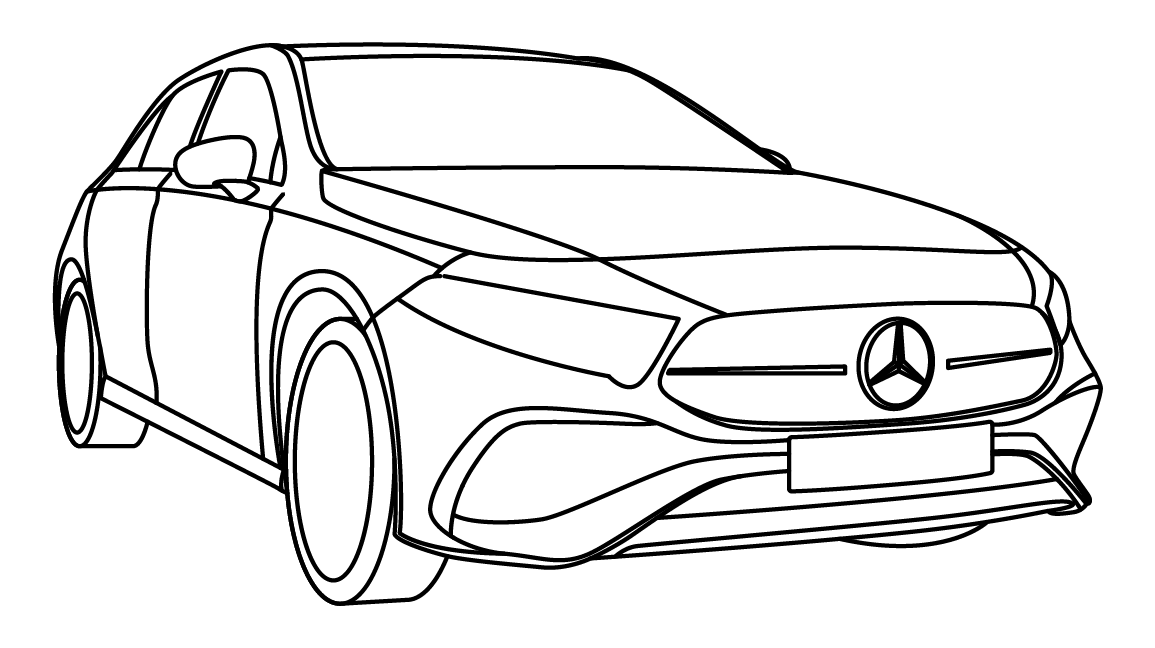What colour is my car?
Want to find out the colour of a UK-registered car?
Enter the registration number into our FREE car colour checker now.


Why should I check my car colour by registration?
There are several reasons why you may want to know the colour of a car by registration.
Perhaps you saw a car ad that appealed to you, but the seller neglected to mention the colour or include clear photographs of the paintwork. Maybe you’re writing an ad to sell your car, but the faded paintwork makes the original colour difficult to distinguish.
No matter what the reason, if you would like to find out the colour of a UK-registered car, our car colour lookup tool can tell you without delay. Simply enter the reg number into the field above and we’ll take care of the rest!
Does your car need a touch up? You’ll need to locate your car’s paint code which can’t be done online by registration. Read on for full guidance.
Colour matching for car paint
If you need to determine a car’s paint colour for a re-spray, or even a paintwork touch-up, simply knowing the name of the colour will not be sufficient to achieve a seamless finish.
If you intend to restore your car’s paintwork to its original splendour, you’ll need to know the precise ‘paint code’. Whether you choose to re-spray the car yourself or take it to a local garage, you’ll need to know this code to ensure a consistent look.
Finding your paint code
No matter what type of car you drive, the paint code should be printed somewhere on your vehicle. Unfortunately, finding this code can sometimes be tricky, as its location varies, depending on the make and model. Fortunately, the location of a car’s paint code is usually listed in the owner’s manual.
If you have lost or misplaced your manual, you can try searching online for the paint code location for your car’s specific make and model. You can also try contacting the dealership where you originally purchased the vehicle, as they may be able to provide you with the required code.
Popular car paint code locations
Looking for the paint code location on your car? Here’s a quick guide to some of the most common paint code locations for the most popular car brands in the UK:
-
Volkswagen paint code location
Most Volkswagen models have a ‘data sticker’ on the boot floor, which includes the paint code.
-
BMW paint code location
The best place to find the paint code for a BMW is by looking in the door jambs or the frame of the vehicle.
-
Audi paint code location
You should be able to find your Audi’s paint code on a white sticker inside the vehicle’s boot. The best places to look are under the boot lid, under the mat, on the spare wheel – or inside the rear compartment.
-
Mercedes-Benz paint code location
Your Mercedes-Benz paint code can be found on the underside of the hood, inside the door jamb on the driver’s side – or on the underside of the bonnet. Modern Mercedes-Benz paint codes comprise three numbers – although some older codes are prefixed with the letters ‘DB’.
-
Nissan paint code location
You should be able to find your Nissan’s paint code under the bonnet, on the ’bulk head’ (which is located at the back of the engine bay) – or at the bottom of the driver’s side door. With certain Almera Tino and X-Trail models, you’ll find the code in the footwell, near the seat slide handle.
-
Toyota paint code location
Your Toyota’s paint code should be located in the door jamb on the driver’s side.
-
Peugeot paint code location
In most Peugeot models, you can find the paint code on a sticker or metal plate located on the door jambs (or frame), on the inner door frame, in the A-post or hinge area.
-
Renault paint code location
Renault paint codes are often located in the door jambs, on an oval-shaped sticker. The code is usually the last three digits of a five-digit code printed on the sticker.

What are the different types of car paint?
If you are planning to re-paint your car (or touch up the paintwork) the paint code is not the only thing to consider - you also need to choose the correct paint type. There are several common types of car paint:
-
Solid paint
Most Volkswagen models have a ‘data sticker’ on the boot floor, which includes the paint code.
-
Metallic paint
The coveted shine seen on metallic car paint is achieved by mixing tiny pieces of aluminium powder into the paint. When the metal particles reflect light, the paintwork shines. Whilst metallic paint is a premium option for most car models, it is still hugely popular among UK drivers, thanks to its aesthetic appeal.
Unfortunately, metallic paint damage is a little more difficult to rectify – and even manufacturer-approved paint shops cannot guarantee flawless results.
However, if well cared for, a car with metallic paint can be highly sought after on the second-hand market. Depreciation for cars with premium options such as metallic paint also tends to be less steep than their base-model counterparts.
-
Pearlescent Paint
Pearlescent paint contains ceramic crystals that reflect and refract light creating a greater depth of colour than any metallic equivalent. What’s more, under bright light conditions, some lighter shades of pearlescent paint become iridescent, appearing to change colour when viewed from different angles.
Of course, it isn’t cheap: if you opt for pearlescent paintwork with a new car, you can expect to pay an extra £500 – or more.
Unfortunately, pearlescent paintwork is even more susceptible to damage (and more difficult to repair) than the metallic kind. If you own a car with pearlescent paint, you need to take extra care when cleaning it; any pieces of dirt and grit nestled into sponges or brushes can potentially damage the paintwork.
-
Matte car paint
Matte paint absorbs more light than it reflects, which creates a muted sheen - and lends a distinctive texture to the bodywork.
However, matte paint usually comes with a hefty price tag – and requires even more care and attention than pearlescent paint. If your car has a matte finish, you’ll need to clean it regularly with a specialised shampoo and polish.
Changing your paint colour
Is your current paintwork failing to turn heads? Would you like to make the switch to something with a little more kerb appeal? Enter your reg number into our free car valuation tool to find out how much your current car could be worth.
When choosing a new car, it is also worth bearing in mind that your choice of colour can influence its resale value. Therefore, if you plan to sell your next car at any point in the future, make sure you consider more than just personal preferences when selecting a paint colour.
Frequently asked questions
No, the VIN number does not include the paint code. The paint code is sometimes printed near the VIN number, although you may need to look for it separately. Common paint code locations include the driver’s side door jamb, in the boot and under the bonnet.
Yes, if you have changed the colour of your car, you need to need to update your V5C logbook and send it to the DVLA at the following address:
DVLA, Swansea, SA99 1BA.
According to data collected throughout 2021 by the Society of Motor Manufacturers and Traders (SMMT), grey was the UK’s most popular paint colour for the fourth year running, accounting for 24.8% of the new car market.
With long-term wear and tear, the paint code sticker may detach or become obscured. If this happens, you may still be able to retrieve your paint code by contacting the dealership where the car was purchased. They should have your car’s details, including its paint code on file.


Our other tools
We’re rated ‘Excellent’ on Trustpilot
Data presented in webuyanycar car, tax and MOT check contains public sector information licensed under the Open Government Licence v3.0 of which we assume is correct at the time of presentation to the consumer.









